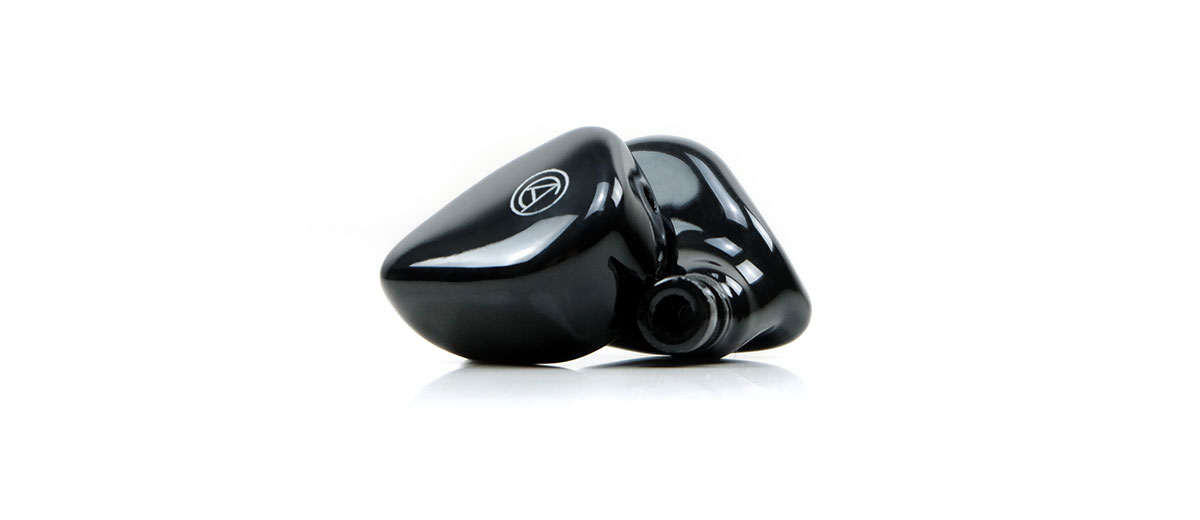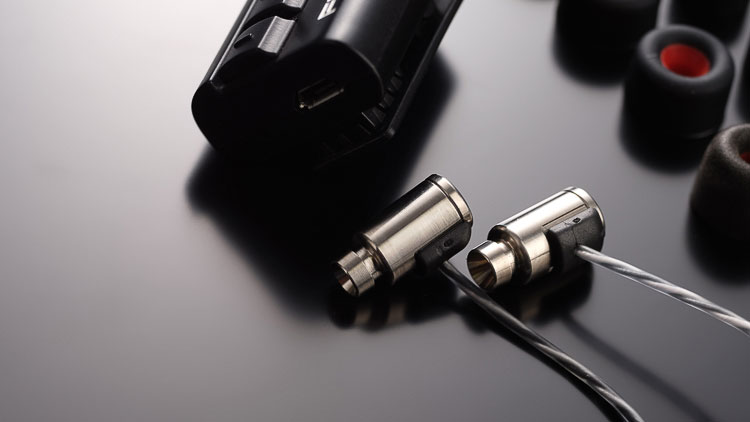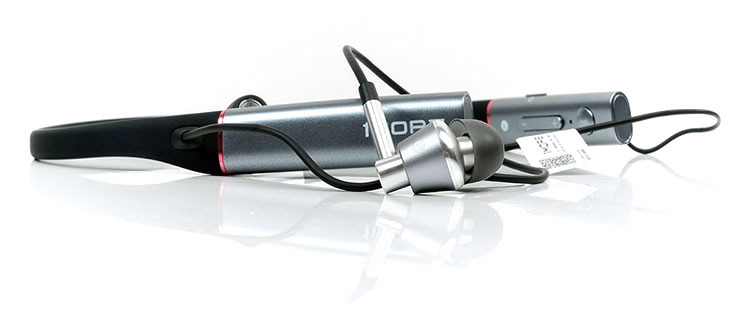Select Comparisons
beyerdynamic Xelento Wireless
$989 ($799 Current street price)
The Xelento Wireless was released in 2019 with a much higher price of around $1200 but since then it had gradually dropped to a more competitive $799 on some sites. Still higher than the Go One but with a similar pitch and format.
Technical
Inside, the Xelento uses its classic Tesla dynamic driver technology miniaturized down to 11mm. It is designed with a sandwich layer diaphragm with the coil inside a full metal enclosure.
The Go One uses a smaller graphene coat diagram 6mm dynamic driver enclosed in Custom Arts signature pressure optimizing design, (cue FIBAE Black legacy).
Both come with BT-powered detachable cable loops, however, the Xelento also comes packed with a more traditional 3.5mm SE 2nd cable for wired playback. BT versions do differ with the Go One offering BT5.1 and the Xelento a much lower BT4.2. Mind you, the Xelento was out in 2019 so the lower rating is understandable.
Both the Go One and the Xelento BT module are capable of up to multi-point aptX HD decoding if your source’s BT chipset offers it. In the case of some Samsung models, that’s not possible so it can mean both are just up to aptX but the FiiO M17 works just fine.
One big plus is the beyerdynamic MIY app that smoothly integrates with the Xelento using both Apple and Android, something which the Go One does not have. You can personalize the Xelento sound with EQ, control voice call quality, and track your daily listening habits.
The Xelento Wireless is rated at 8 hours battery life which is much lower than the 15-20 hours of the Go One and I would assume if all aptX HD the rating would be lower than 8 hours also.
Design
The Xelento Wireless housing is about half the size of the already compact Go One driver. In short, they are tiny but the robust CNC Aluminum finish does make them feel slightly heavier than the acrylic materials used in the Go One.
Since the form factor is very compact there is almost next to no need for custom contouring on the Xelento compared to the Go One’s more determined outlines.
The majority of the Xelento isolation performance is going to come from the tips you use. These are very tip-dependent since they do not really use any part of your outer to rest on. For me, the longer the tip and the better the seal then the better the performance with the Xelento wireless.
The Go One’s sound signature does adapt to the tip but its stock tips are less fussy in terms of isolation. I still would have my preferences though with the Go One single flange for sound and the dual flange for isolation. The Xelento mushroom tips are nowhere near as good for isolation meaning for the last few years I have opted for the stock foams which do a lot better.
The Xelento cable is a lot heavier but its dual barrel design is a bit different from the Go One with the battery centered in the cable to create a sort of dead weight that keeps it nicely controlled. The Go One cable is by far the lighter and maybe the easier to manage of the two though not as centered.
Performance
The Xelento Wireless is more V-shaped and high-contrast sounding compared to the balanced mid-bass punchy Go One. It pushes hard on the low-end and highs whereas the Go One opens up the mids a bit more making it a suitable choice for mid-paced rockers or classic male rock vocalists.
The Xelento excels with modern pop and synthwave with its heavier sub-bass tilt and cleaner highs. It does have a nice upper-mids push for female vocal clarity but otherwise, the lower-mids to 1k are quite dipped in comparison.
The Go One sub-to-mid bass is a little flatter, perhaps more of a gentle rise to 100Hz and a slower drop into the lower mids. There is less of an upper-bass to lower-mids suck out keeping timbral coloration more to the warm and smooth side.
The Xelento’s bass cut is deeper from 100Hz to around 1k keeping lower register instrumental positioning clean but thinner and more distanced. You do get a stronger fundamental when the notes are really low and plenty of odd-harmonic infusions to balance the sound signature so it is actually a very refined sounding v-shape and not too peaky on the highs either.
Vocal timbre is smoother and richer on the Go One, you do get a bit more vocal heft and euphony which I enjoy. The Xelento’s lower treble is more to the fore and a bit cleaner sounding for female vocals, percussion has more energy also.
For staging, the Go One is more balanced with good mids separation with the Xelento Wireless sounding narrower and less open through the mids from 500Hz up to 1k. You have more depth and power from the Xelento low-end sub 100Hz and a shade more presence and energy for the upper-mids vocals and lower treble.
Flare Audio Flares Pro 2
£299.00
There are a number of Flares Pro iterations since the original in 2017. Sadly, I do not have the last one, the HD but I do have the Flares Pro 2 which has a price point quite close to the Go One.
Technical
Inside, both IEMs share a single dynamic driver implementation but the Pro 2 uses a slightly smaller ‘Dual Jet’ 5mm dynamic driver as opposed to 6mm inside the pressure optimized design of Go One. It is also made from beryllium and mounted inside a titanium cylindrical housing compared to the Go One’s graphene driver design inside a contoured lightweight acrylic shell.
The BT wire system on both is very different also. The Pro 2 is a balanced OFC design and not detachable at the driver side for the cable. However, it does have a single large module that allows you to attach the cable via each channel individually.
The SPC Go One BT cable is completely enclosed with connections to the drivers instead. That means you can go wired with any cable you like with the Go One whereas the Pro 2 comes with a special extension terminated with a 3.5mm jack to allow you to go wired. So, both offer wired and BT options but only the Go One allows you to pick your own wired cable of choice.
The BT tech inside the Flares Pro 2, however, is a bit behind with just BT4.1 compared to BT5.1 on the Go One cable. You only get a maximum of aptX compared to the aptX HD on the Go One and the battery lifecycle is a bit short on the Flares Pro at 10 hours of playback time compared to 15-20 from the Go One battery.
Design
Another diminutive design and again a smaller but sturdier aluminum housing than the Go One. However, the Pro 2 drivers have a bullet-type form factor which can be a bit like marmite to some, you either love them or loathe them.
The Go One’s lighter acrylic shell and contoured design uses more of its surface mass to help with fitting and isolation whereas the bullet shell of the Pro 2 does not touch your ear at all. Instead, its ear tips do the steadying and isolation and thankfully they are rather good at that.
I would say the isolation performance of the Go One is on par though with its stock dual flange tips, and almost on par with the single flange once you move them around a bit in your ear. Cable weight is better with the lighter Go One cable and it does offer lower microphonics so I would also give the Go One cable an advantage in terms of outright comfort and useability.
Performance
You can tell the Go One has a slightly bigger driver with a bigger and more dynamic performance compared to the Pro 2. The Pro 2 is, like the Xelento, fairly V-shaped, colder sounding, with more sub-bass bias than the Go One and definitely more treble emphasis with an elevated 5-10K region.
However, its mids recess is much more sustained than the Xelento with a 2-4k dip similar to how I remember the Sennheiser IE800 curve with only a mild bump around 1-2k. As such the vocal imaging is quite distant, more so than the Go One. Also, it is a little on the thin side, especially in the upper mids where you get plenty of shimmer in the timbre.
The Go One is much warmer sounding throughout the mids with a more concerted vocal focus with a 2-4k rise. Performances have some good body and texture and are not too thin and pristine sounding.
The Pro 2 does go deeper though and does very well indeed for sub-bass rumble. It is not as tight as the Xelento driver but it does have more sub-100Hz quantity compared to the Go One driver which shifts its focus more to a punchier mid-bass tuning.
There is more treble extension on the Pro 2 and as such it creates a taller, deeper soundstage but quite a narrow one. The Go One is more relaxed on the lower treble with a moderate sparkle around 8-10k. It does not sound as stretched from top to bottom staging-wise but has a bit more about it in terms of midrange presence.
1MORE Triple Driver BT In-Ear Headphones
$69.99
These originally came out at $199 but now dropping down into the budget category for street pricing. A useful comparison with a popular neckband wireless IEM format from 1MORE that has been used by a wide variety of makers.
Technical
Unsurprisingly, the 1MORE is a triple driver design with a hybrid mix of 2 BA and a single triple-layer titanium dynamic driver. It is pretty much the same design as the wired version that sells for in and around the same price. The Go One keeps it simpler with its 6mm graphene dynamic driver inside a pressure-optimized design acoustic implementation.
The BT side is also quite varied in terms of pros and cons. The 1MORE uses an older BT4.2 tech compared to the more modern BT5.1 inside the Go One. However, the 1MORE can decode up to LDAC compared to aptX HD inside the Go One. A decoding advantage but in our performance section, it is not just about decoding but also the quality of those drivers.
The 1MORE does have apps integration with the 1MORE assistant app so firmware upgrades to the cable are possible via OTA, something which I would have liked to have seen on the Go One which has no apps integration.
Design
If anything, this is where a lot of choices beyond sound might boil down to. Both the Xelento Wireless and Flares Pro 2 share the same design application as the Go One with detachable loop cables whereas the 1MORE is not detachable with a heavier neck brace type style.
It is far bulkier than the Go One but once you get it into position it actually is very comfortable and it has the benefit of allowing you to take out the drivers from your ear and just let them hang. You can do that with the Go One if it is worn behind the neck but it is not as steady and it can slide down your back real easy if not careful.
I would say the useability of both is about the same in terms of controls except for the physical positioning. The 1MORE houses them high on the left side just under your neck whereas the Go One is on the right and slightly lower. I find reaching over and up under my neck a bit tiresome compared to the Go One’s more accessible position.
The big drawback of the 1MORE design is the 7 hours of battery life, possibly less with LDAC. That pales in comparison to the 15-20 hours inside the Go One BT module. It does fast charge in 1 hour though with 3 hours of use with only 10 minutes of charge time compared to the 2 hours charge time for the Go One.
Performance
The timbre on the 1MORE is quite acceptable actually with not too much contrast or a lack of body and a relatively smooth-sounding mid and treble lilt. However, that’s not really the main focus of this particular comparison, rather it’s the technical side.
The 1MORE sounds one-dimensional and lacking in space compared to the Go One. The imaging feels indistinct and likely due to what seems to be a big drop in treble presence that’s sucking out the air from the upper mids and dulling down the sound.
It also has a dominant bass bloom that just hangs out there not doing a whole lot sounding a bit one-dimensional. By comparison, the Go One sounds much more spacious, properly balanced from top to bottom with no real distinct frequency range really overpowering the other.
The Go One is not a neutral tuning, it’s got a fair bit of mid-punch and a warmish tone to the timbre. However, you can tell right away that the resolution and imaging are far better as is the harmonic balance with an improved treble presence that gives everything a nice bit of sparkle and life to it.
Overall, the 1MORE has a nice timbre to its instrument and vocal performance but it lacks the staging complexity or resolution to compete with the Go One. The better driver wins, even if the 1MORE is LDAC triple-driver capable.
Our Verdict
I have no complaints about the value of the Custom Art Go One as a BT-capable dynamic driver IEM. Its aptX HD performance is more than capable of running alongside some of the higher-priced competition.
In its universal format, the Go One is a finely balanced and coherent-sounding tuning that will definitely appeal to those who want a bit more midrange presence and vocals to the fore. The fact you can also get this in a custom format should also pique the interest of those shopping on tighter budgets.
My only detraction is the lack of LDAC from the cable which cheaper creations from the likes of the 1MORE Triple BT currently offer. LDAC-capable cables like these still have an advantage over most of the TWS offerings on the market today.
However, lest we forget, this thing will run for hours and hours on aptX HD with excellent battery performance for such a small lightweight cable. It’s just as well; the lack of fatigue makes this a budget offering that’s very easy on the ear for lengthy listening sessions.
Custom Art Go One Specifications
- 6mm Graphene Dynamic Driver
- 110dB @1kHz @0.1V
- 16 Ohm
- 10Hz-19000Hz (+-10dB into IEC 60318-4 coupler)
- Pressure Optimizing Design
- 2-pin sockets
- Bluetooth 5.1 adapter (SBC, AAC, AptX, AptX HD, Aptx Adaptive support)








